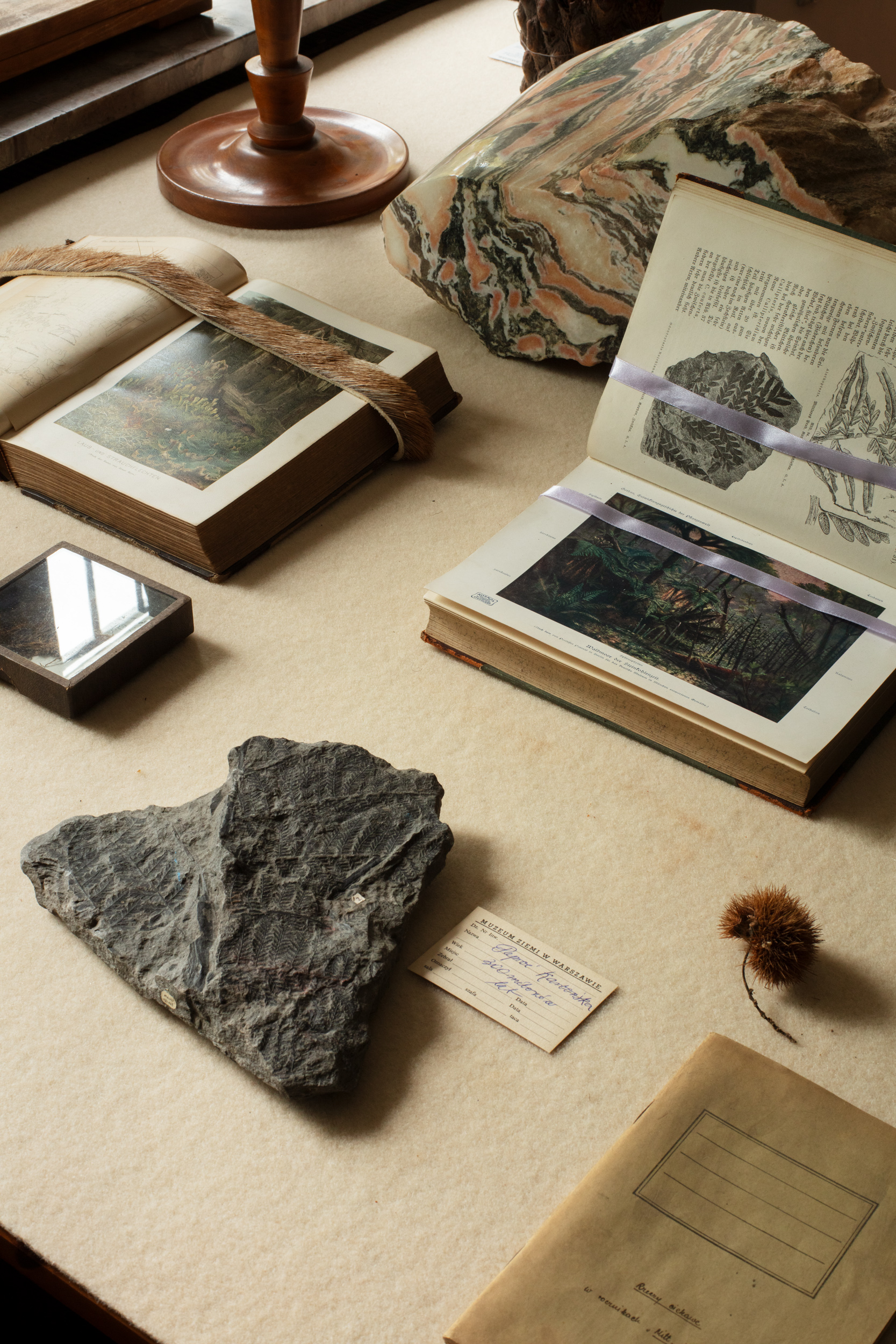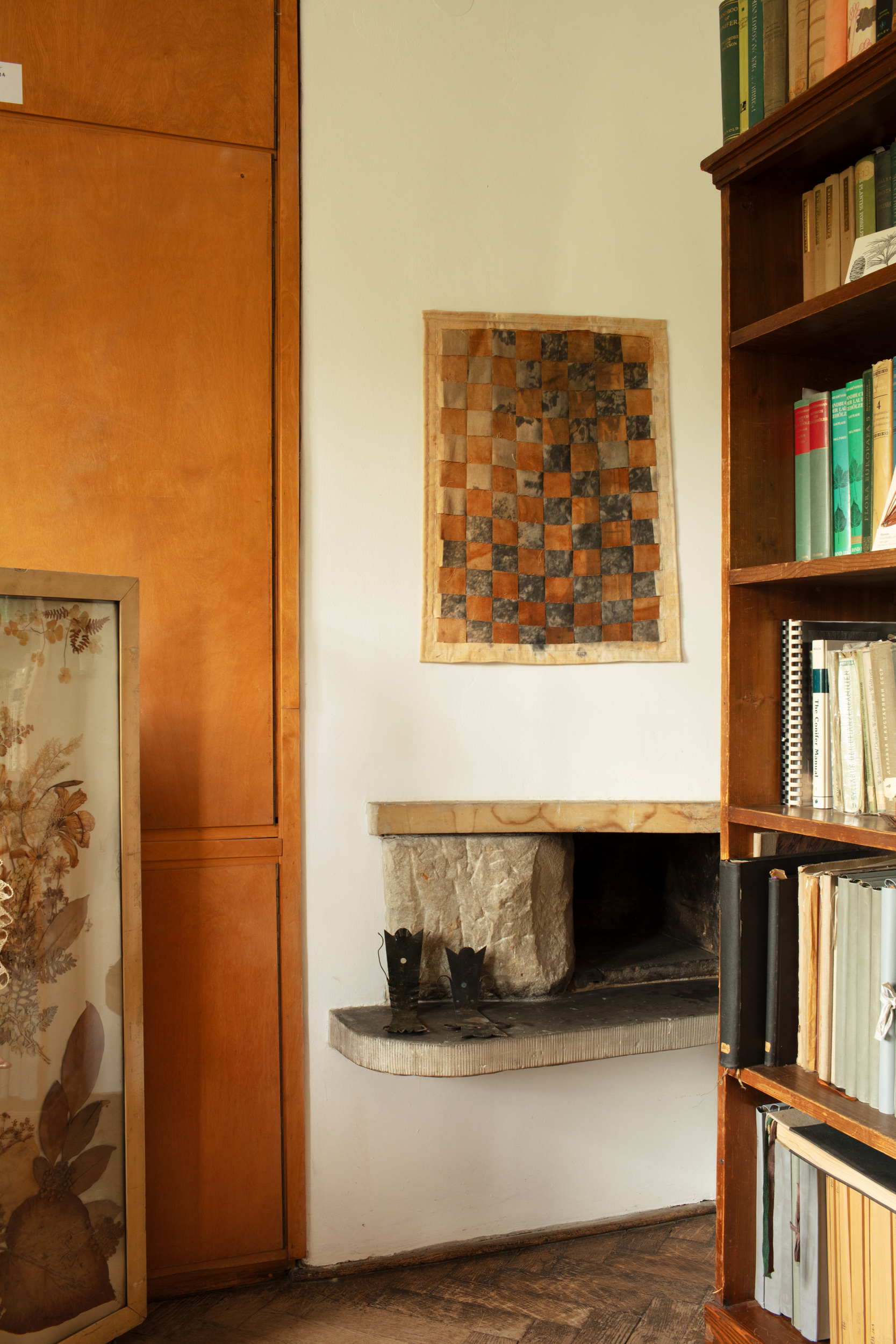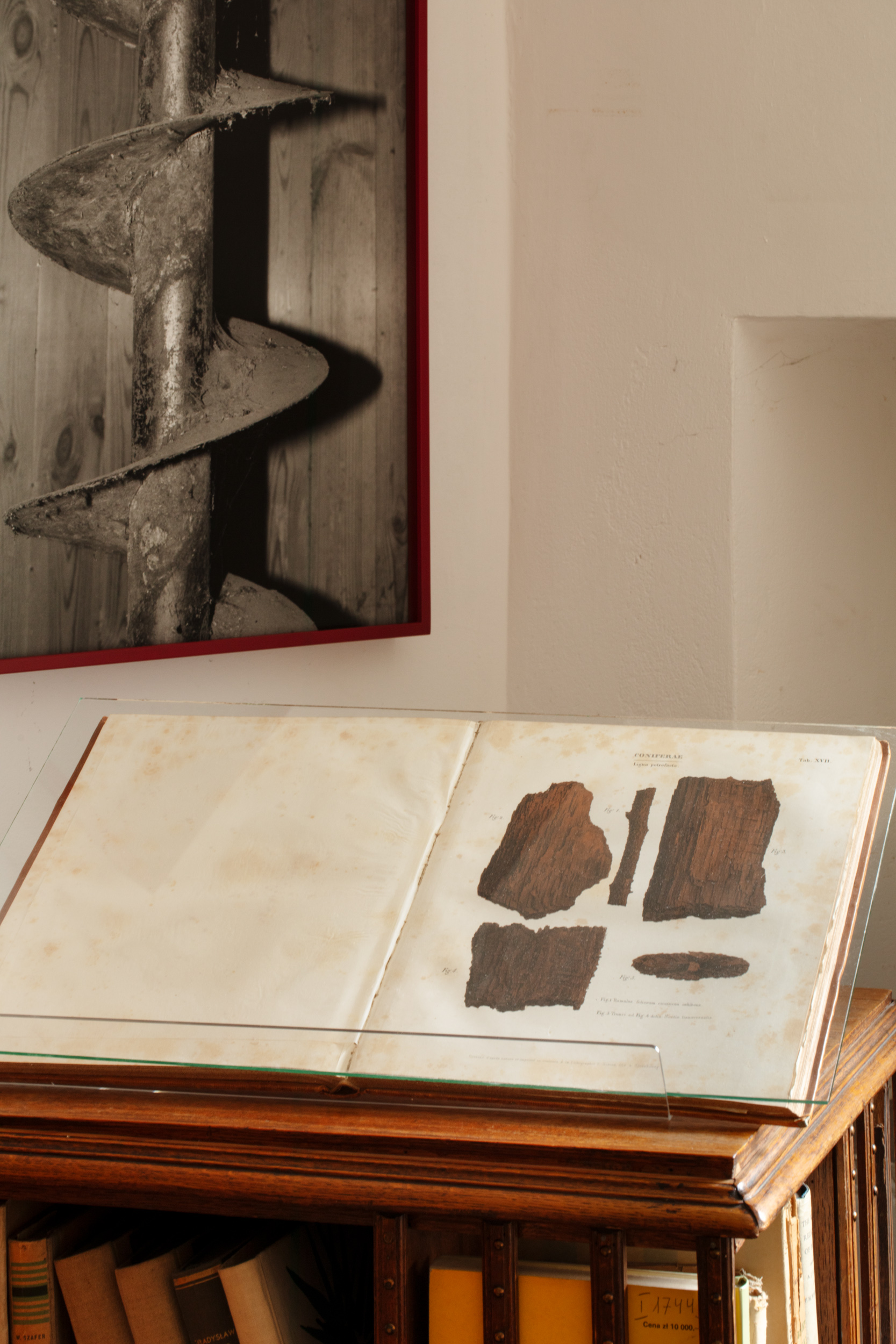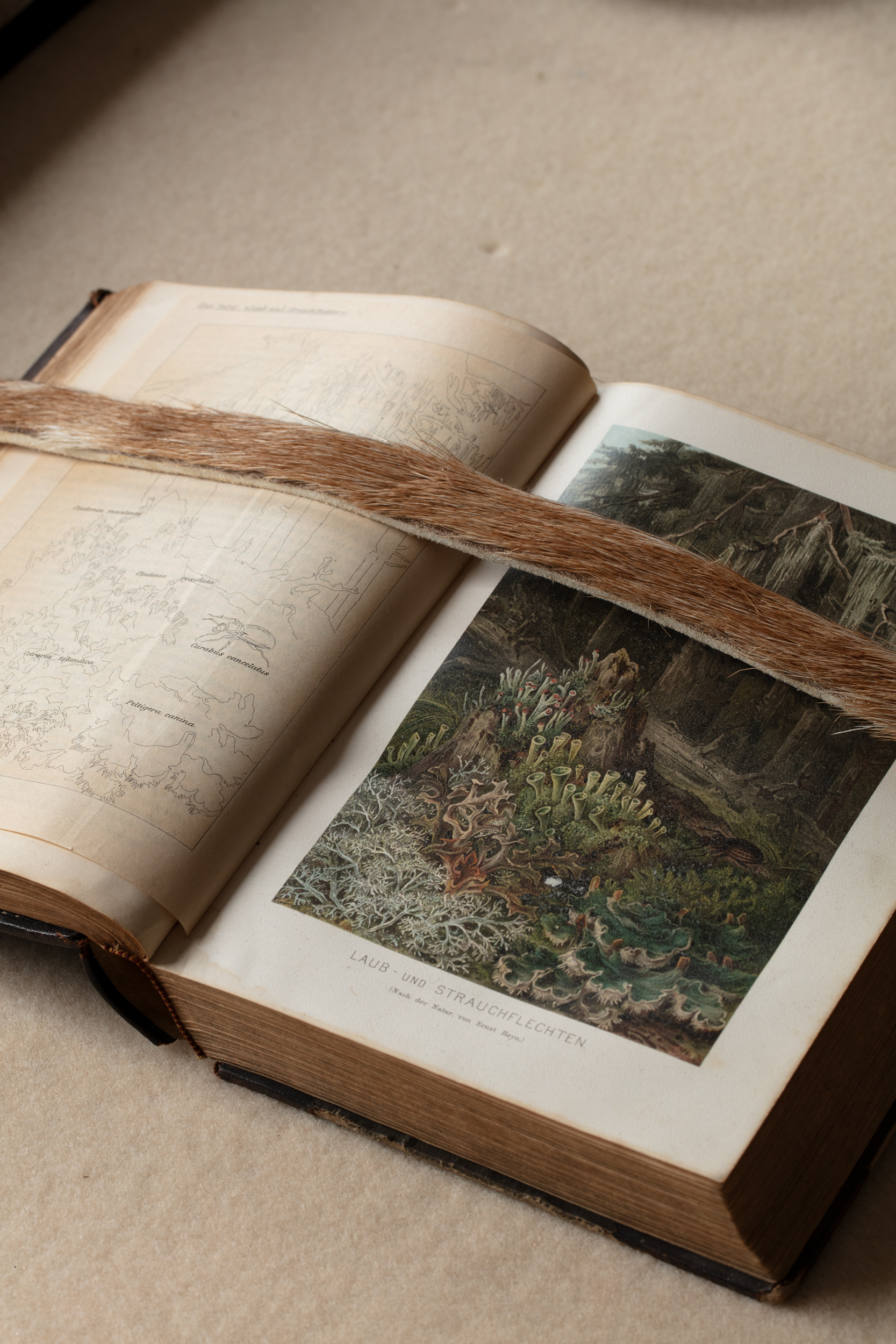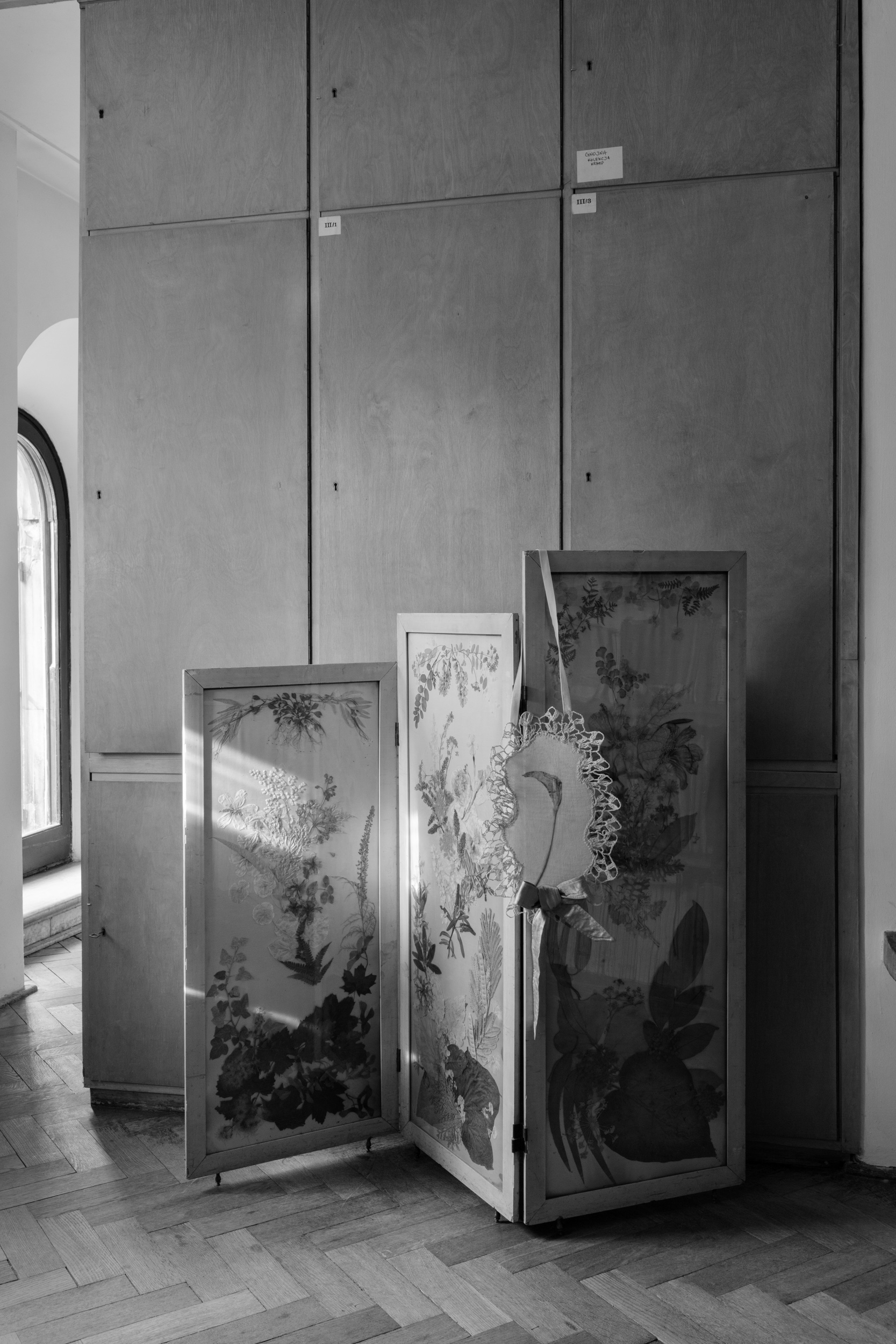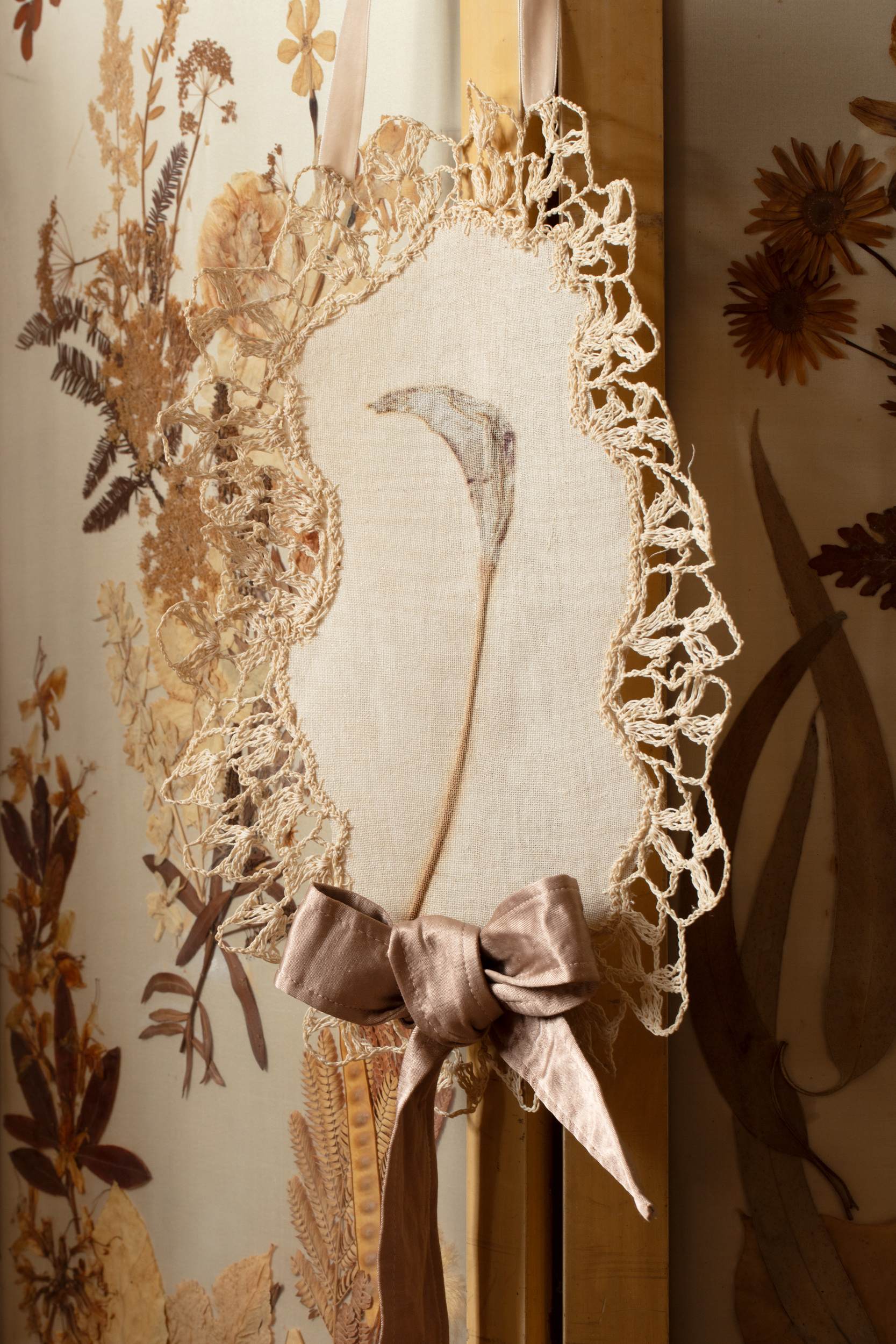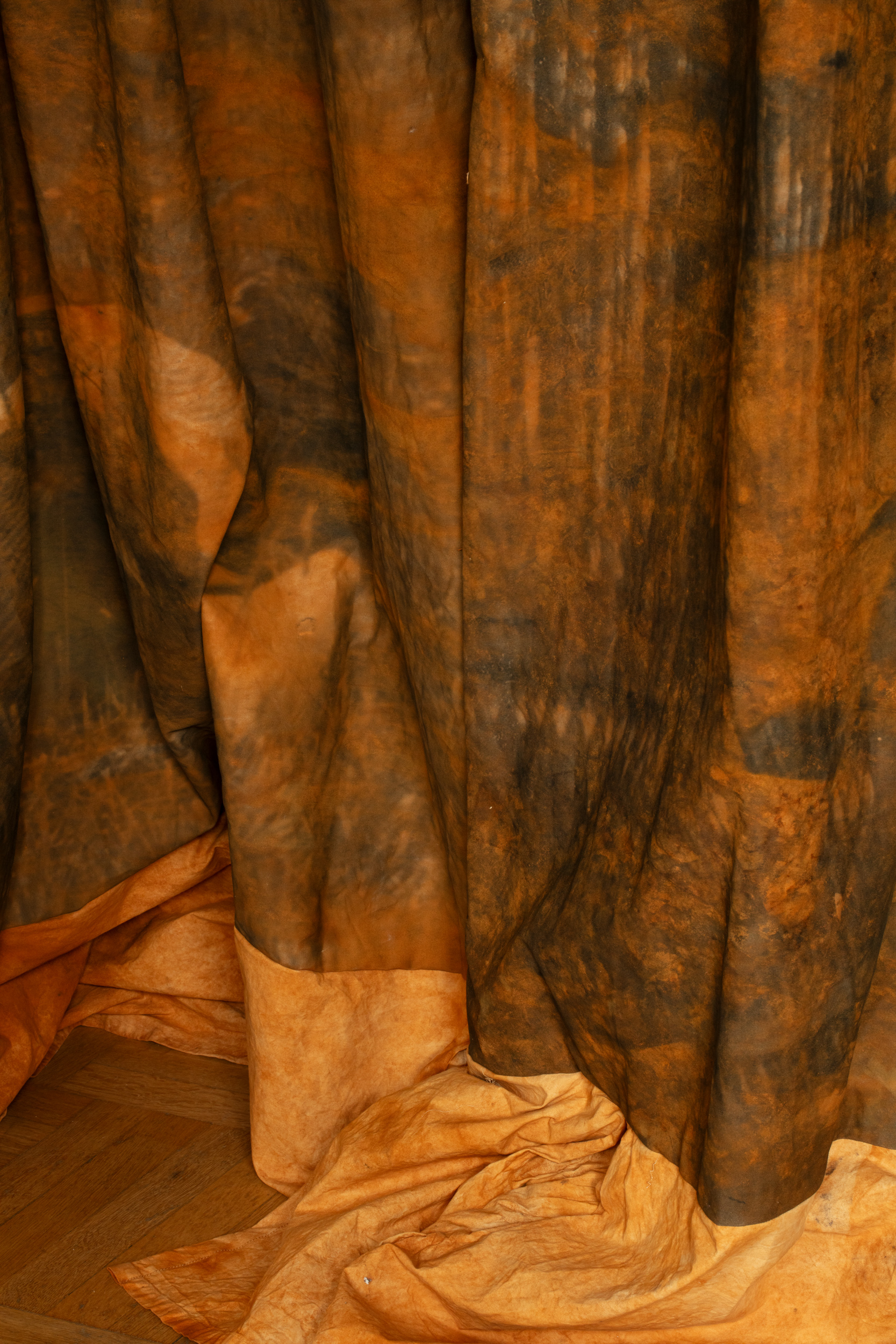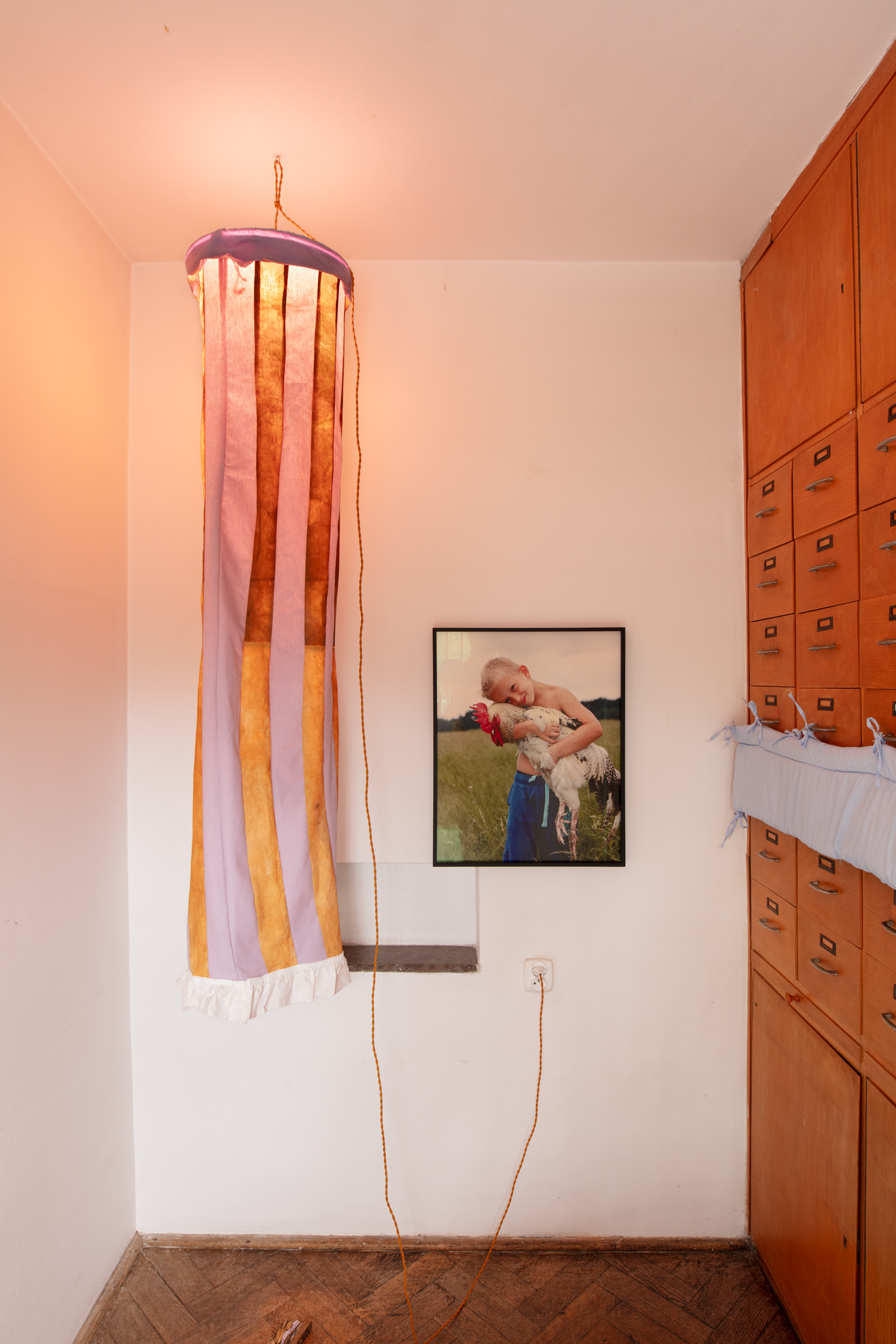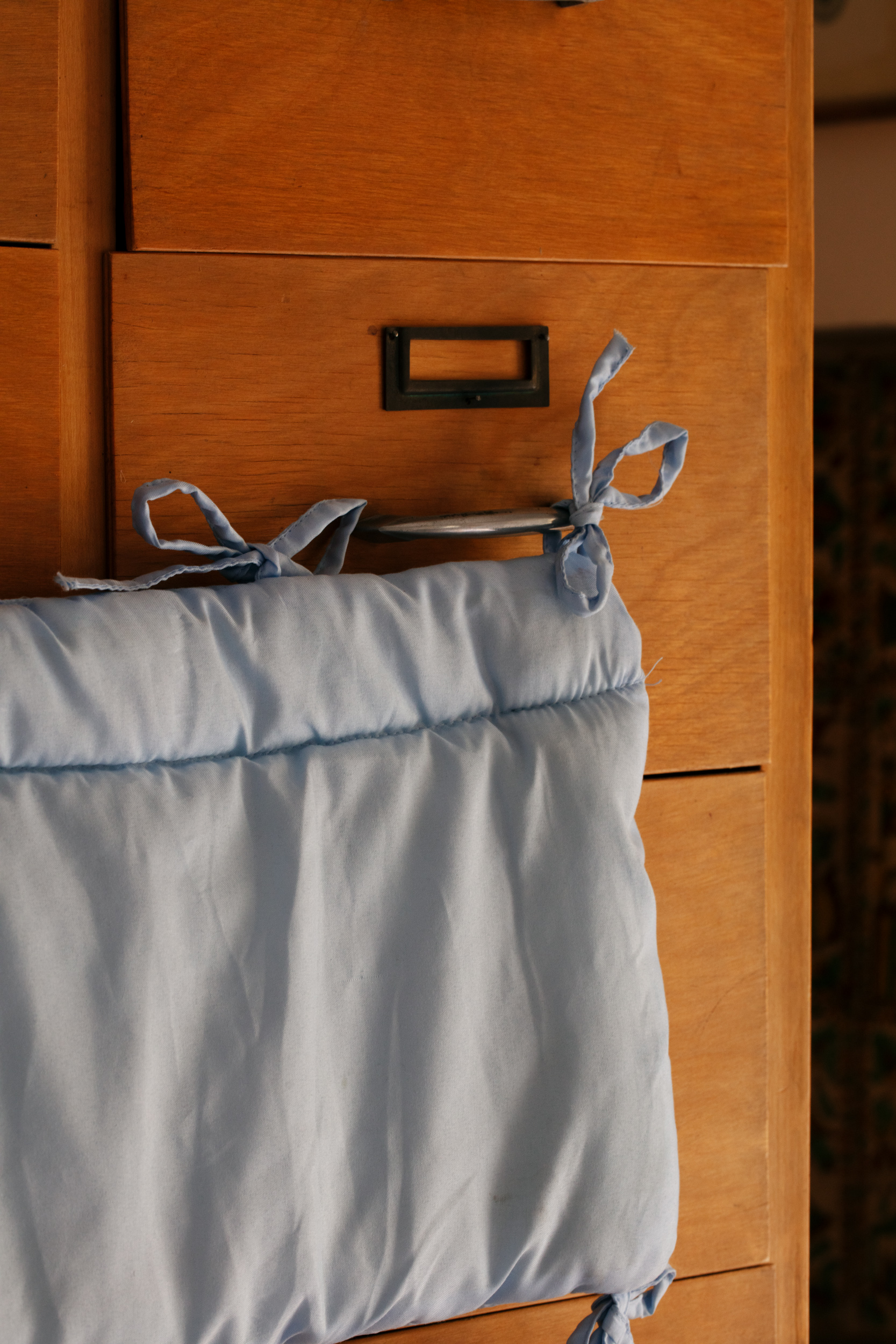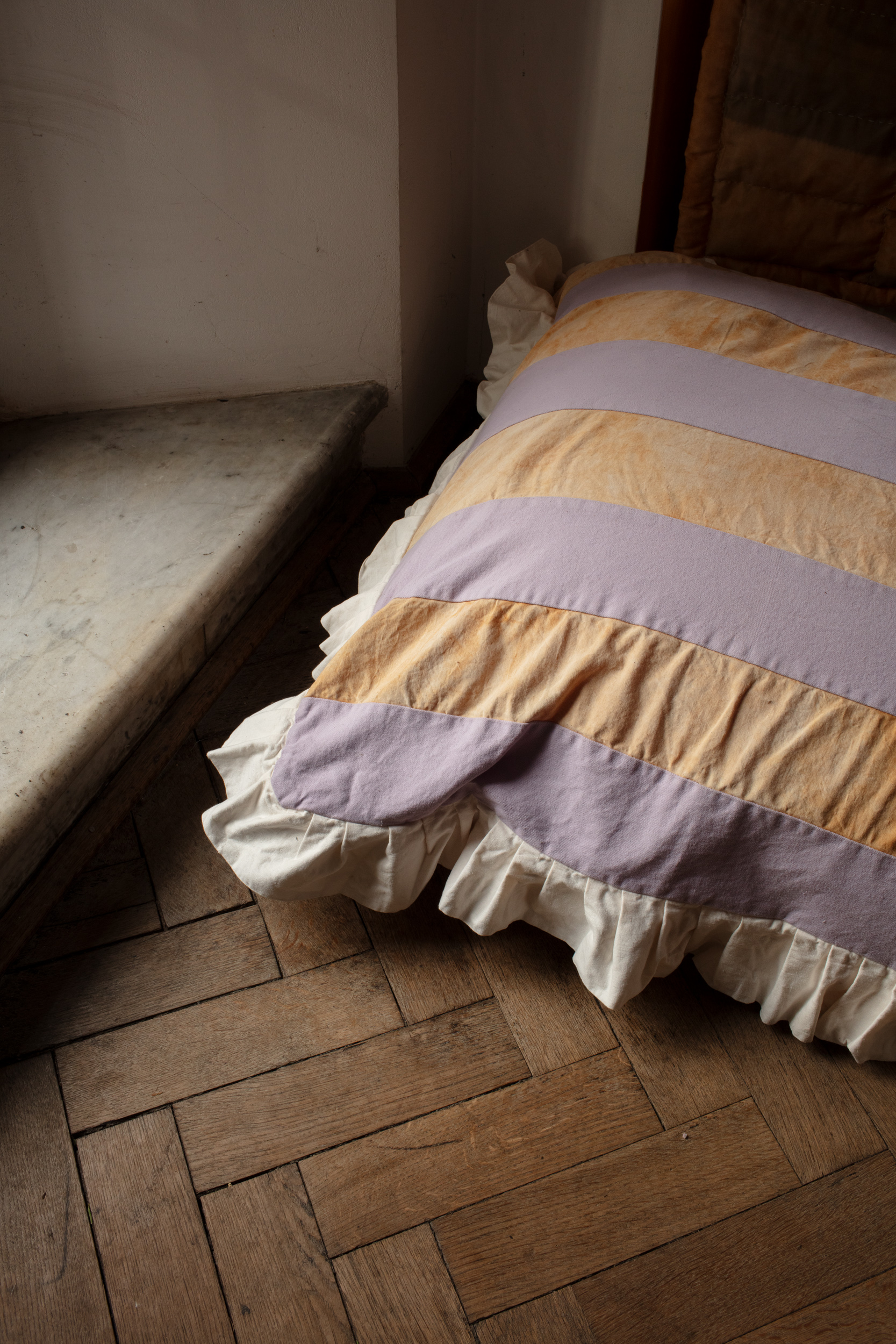
Anna Orłowska
Otherworlds
Sep 28 – Nov 19, 2023
Museum of the Earth
Pniewski's Villa
Na Skarpie 20/26
Warsaw
Opening Hours:
Sun–Fri: 9 am – 4 pm
Curator: Katarzyna Roj
Co-organiser: BWA Wrocław – Galleries of Contemporary Art
Exhibition partners: Polish Academy of Sciences Museum of the Earth in Warsaw, BWA Wrocław – Galleries of Contemporary Art

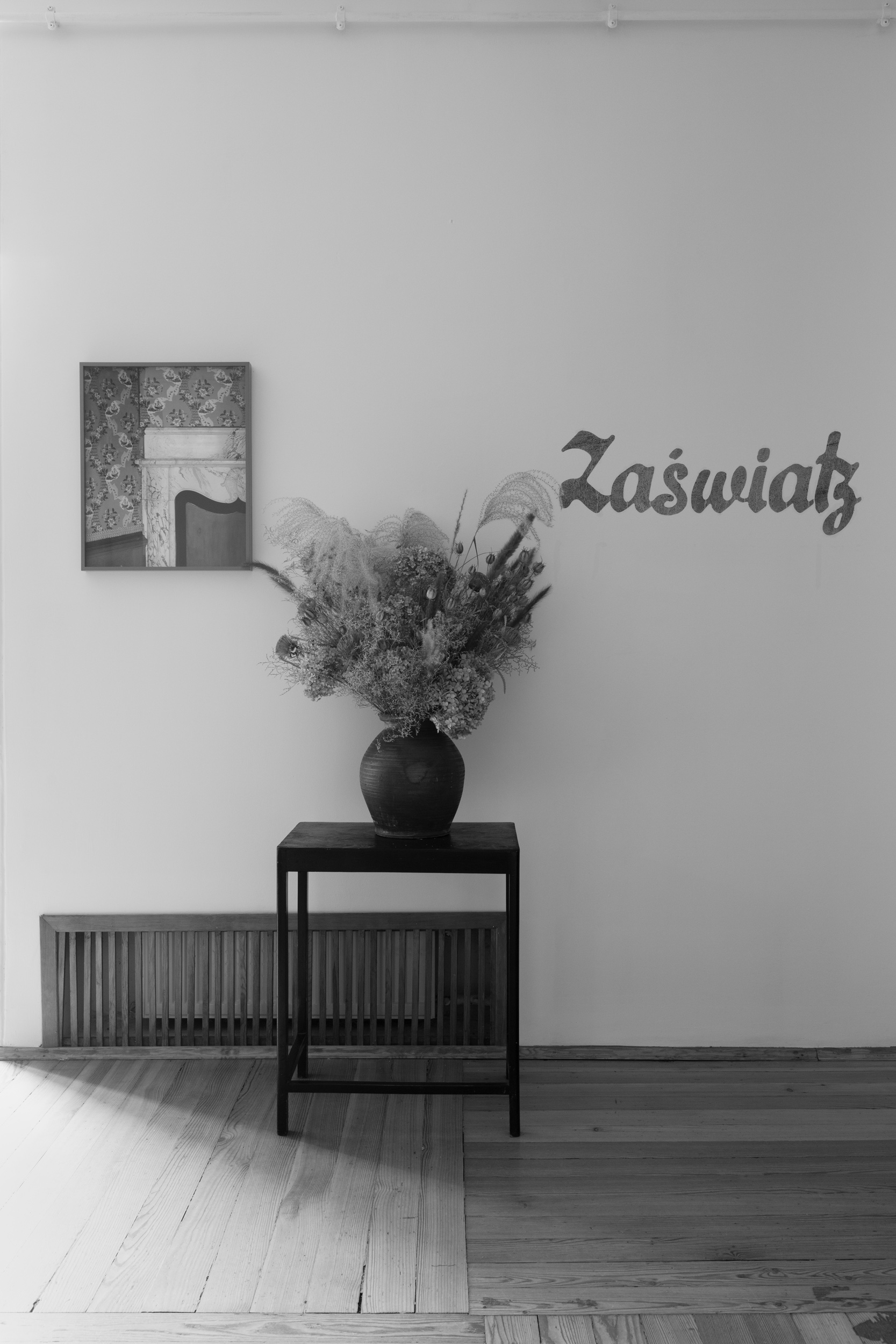
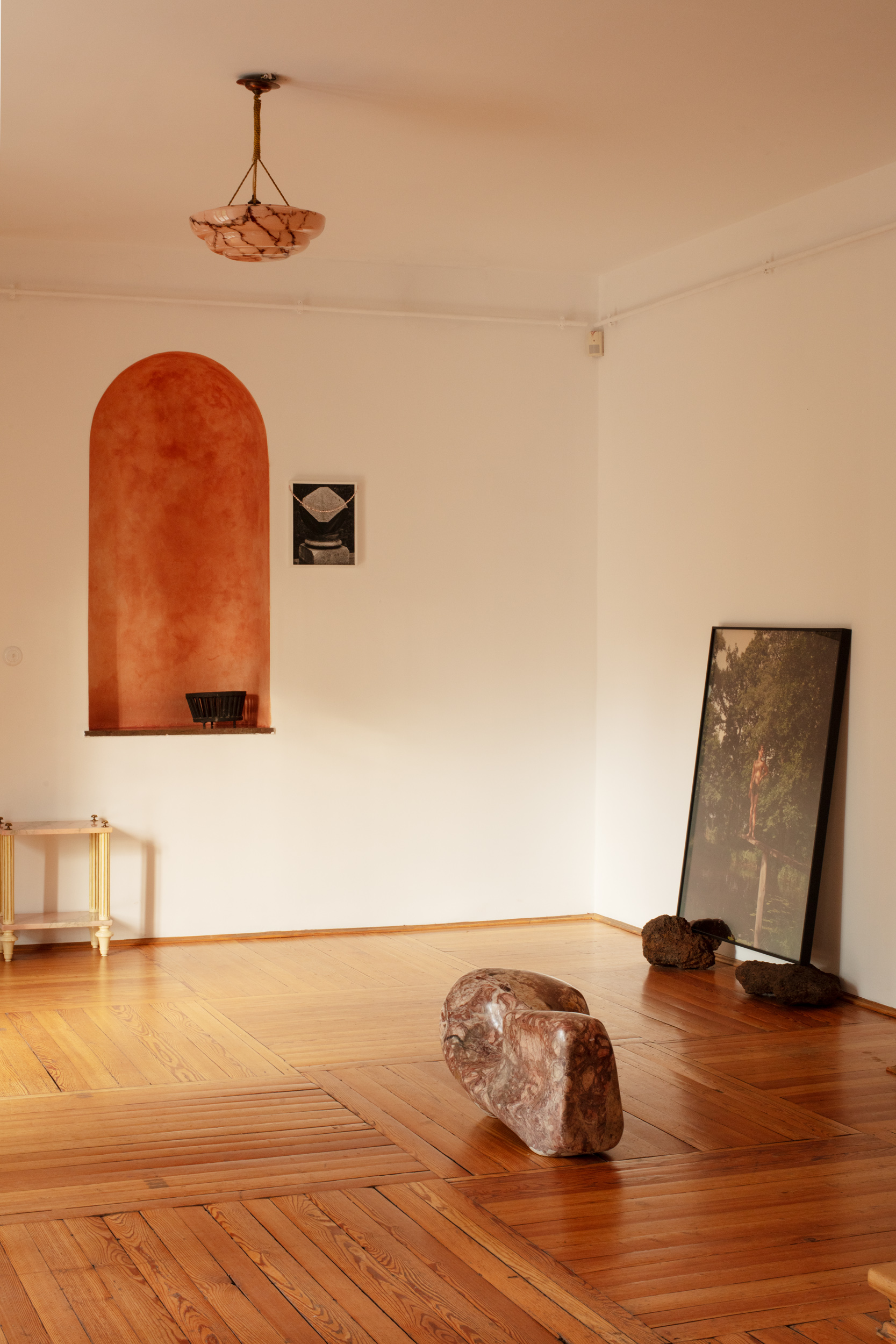
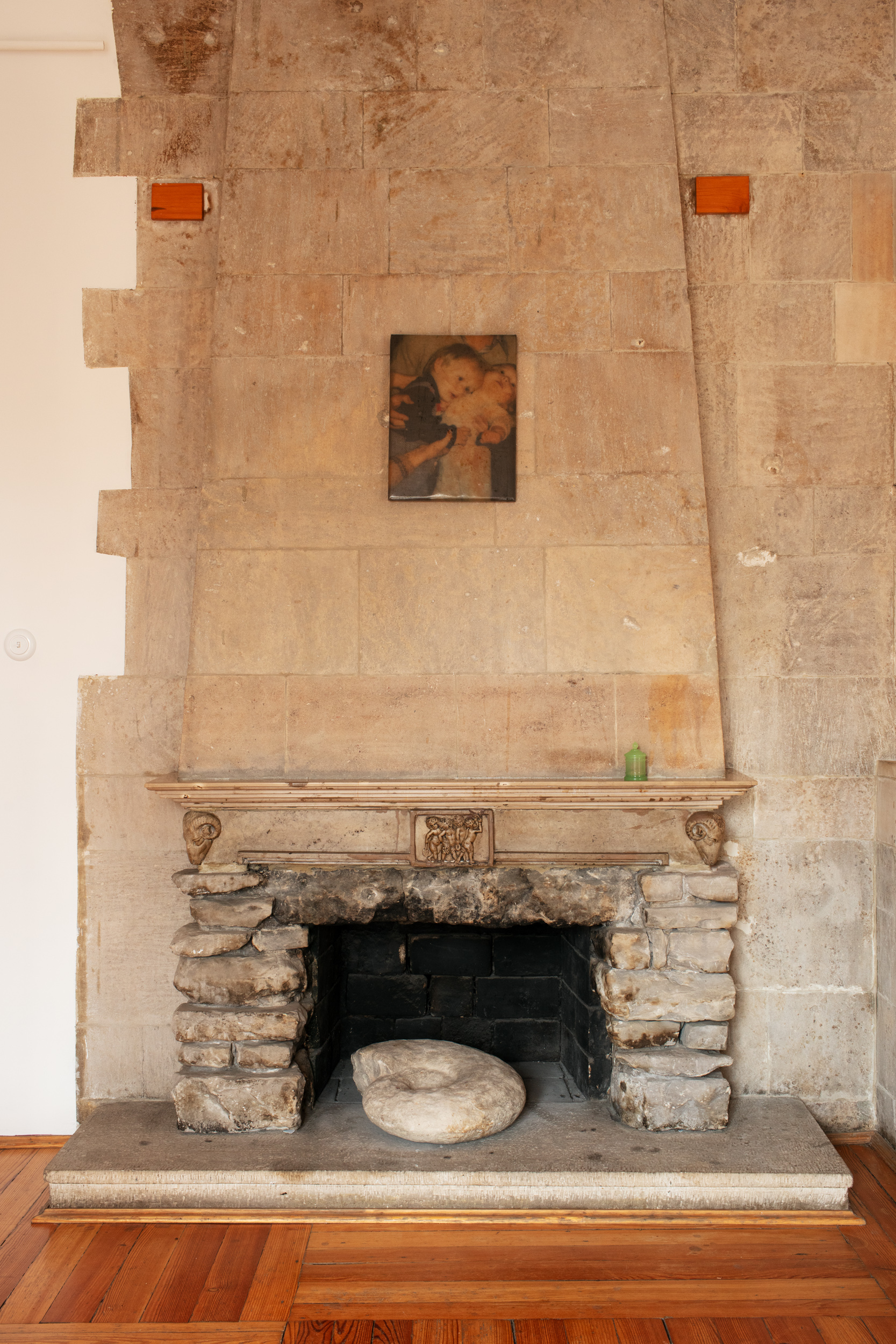
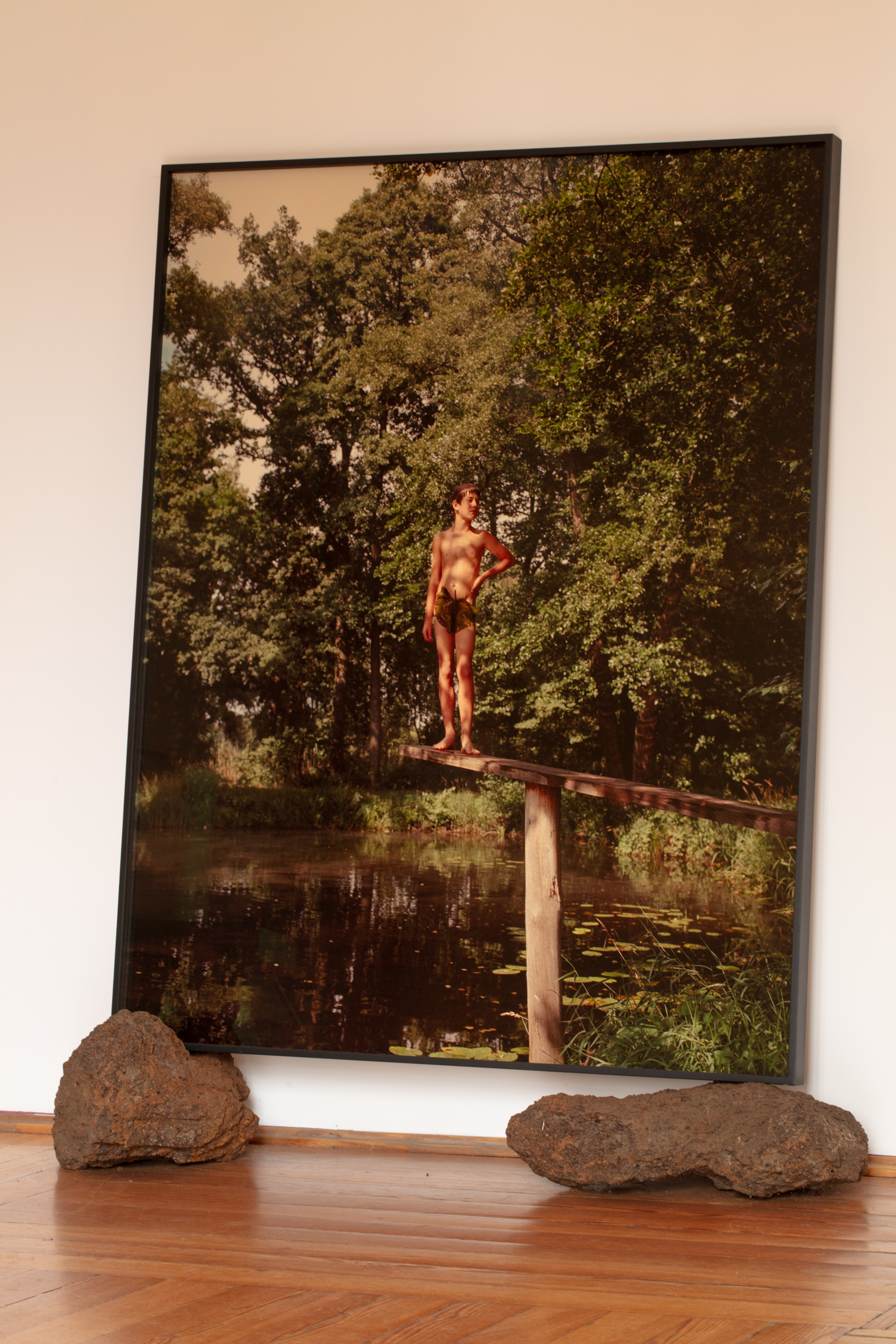
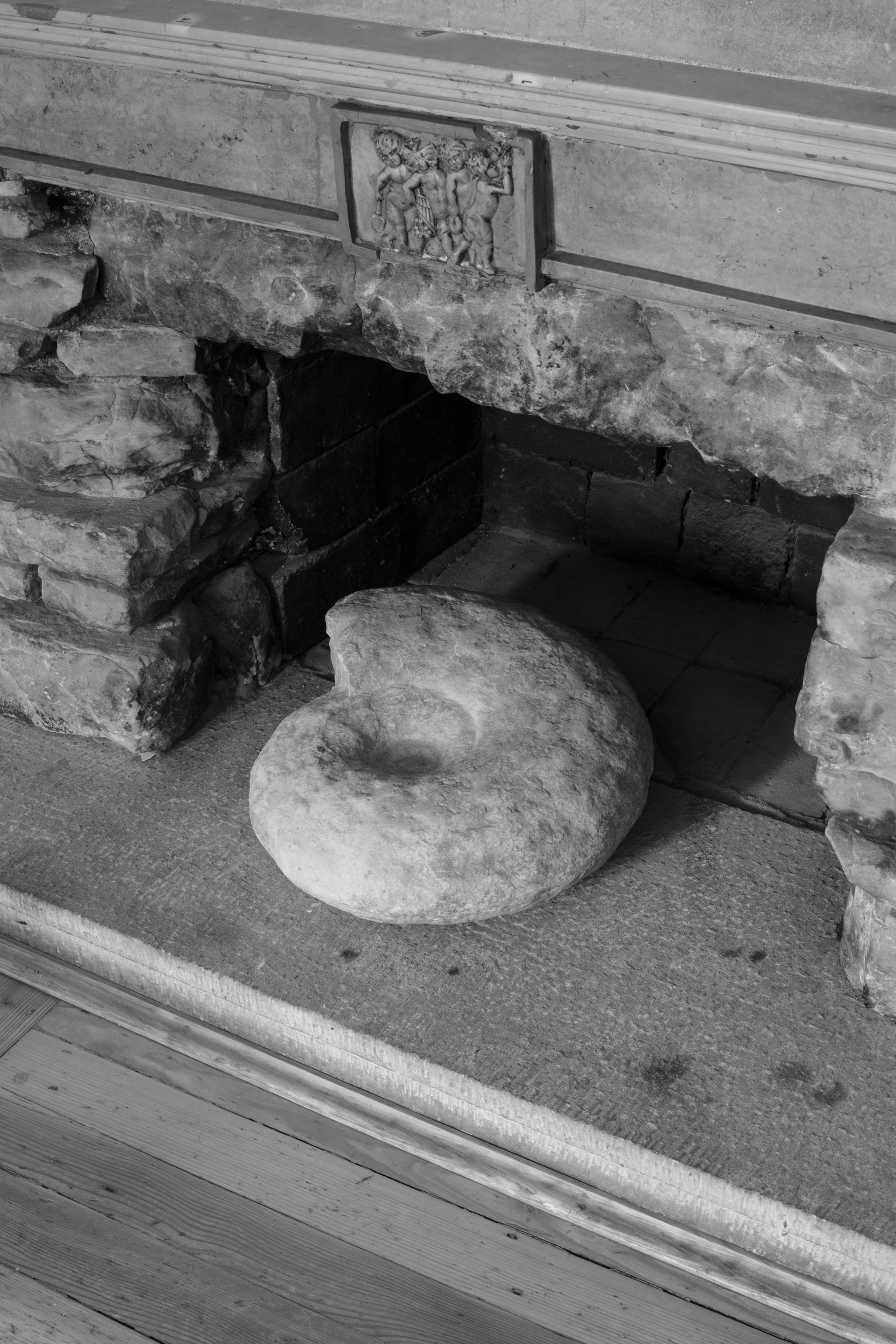
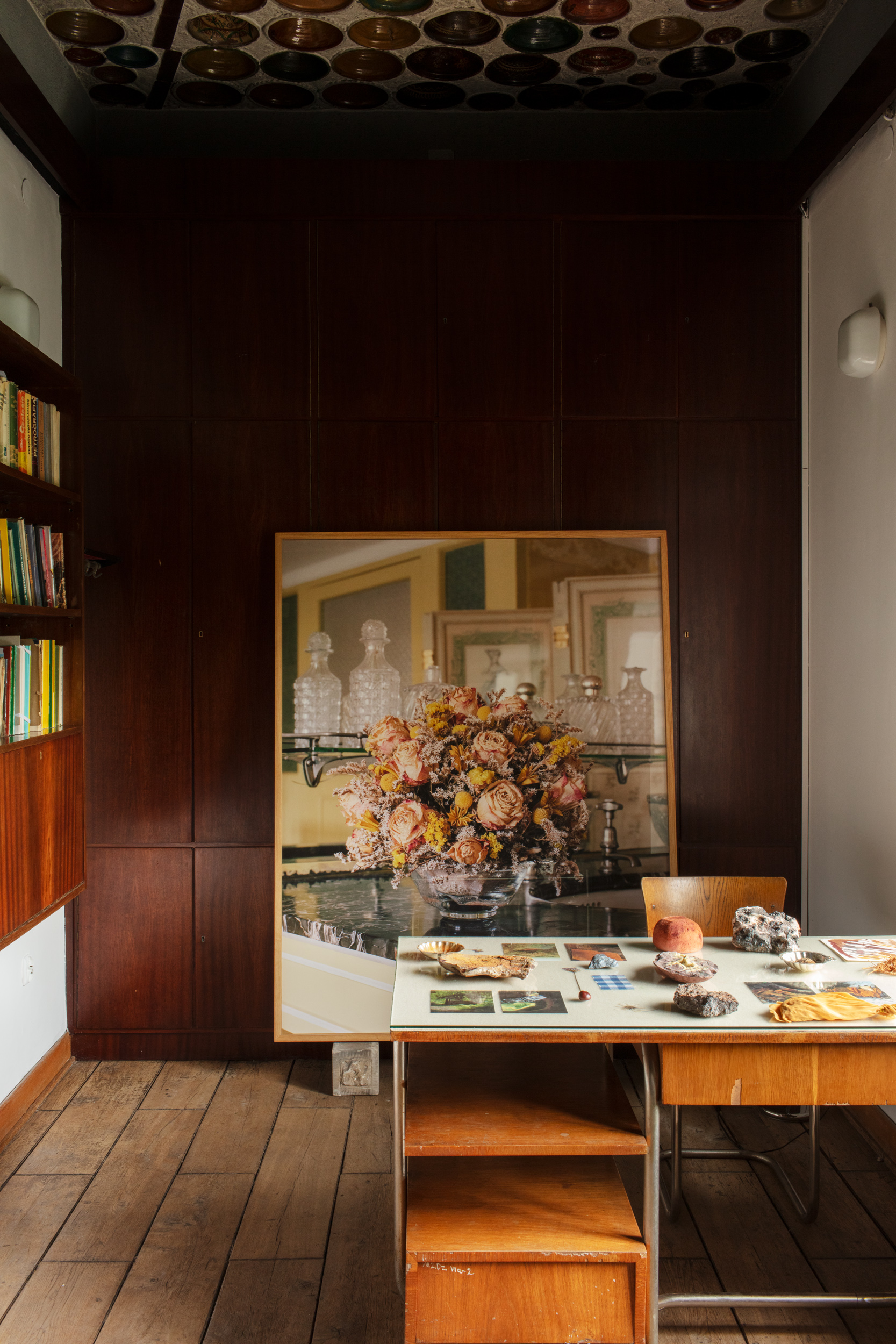

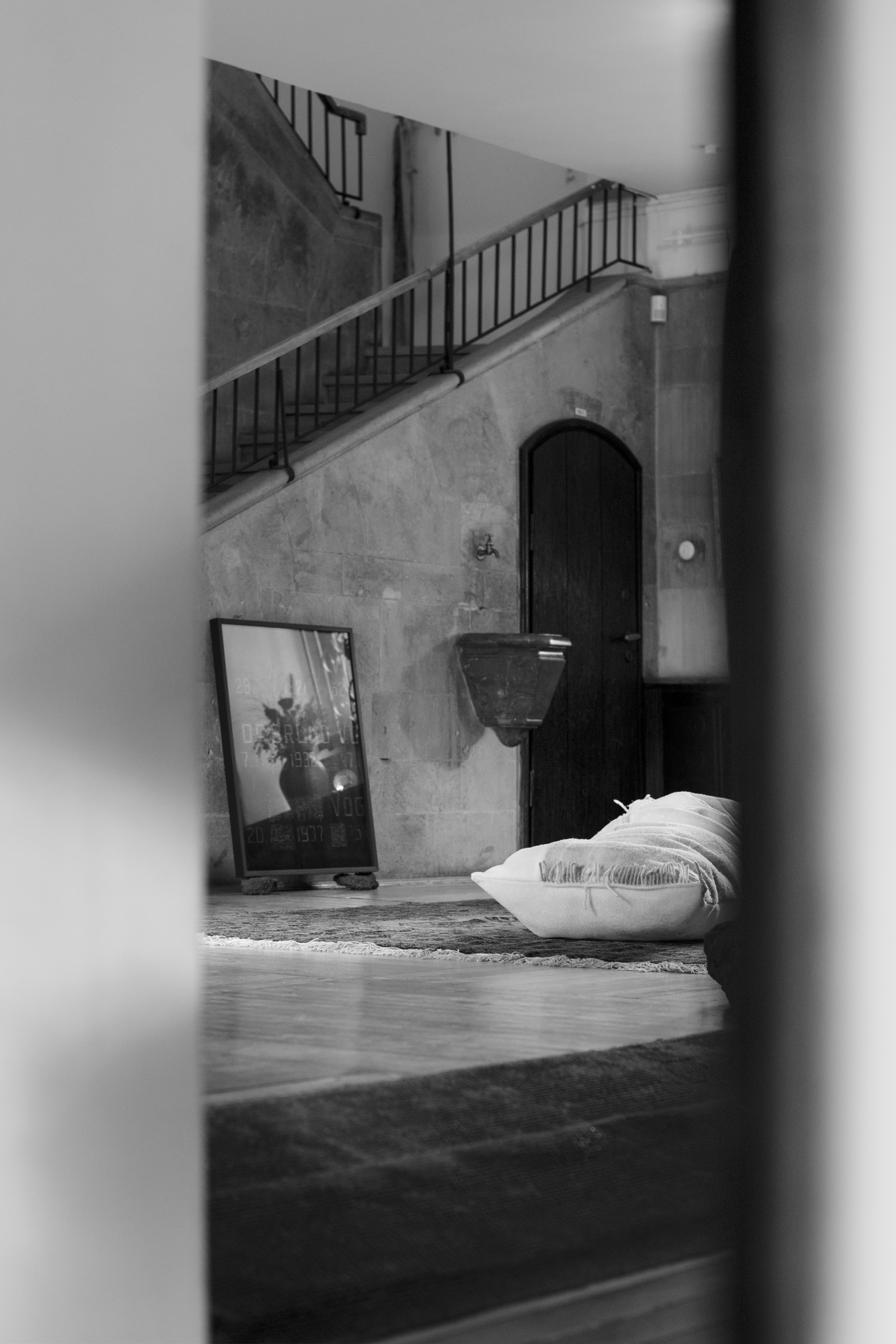
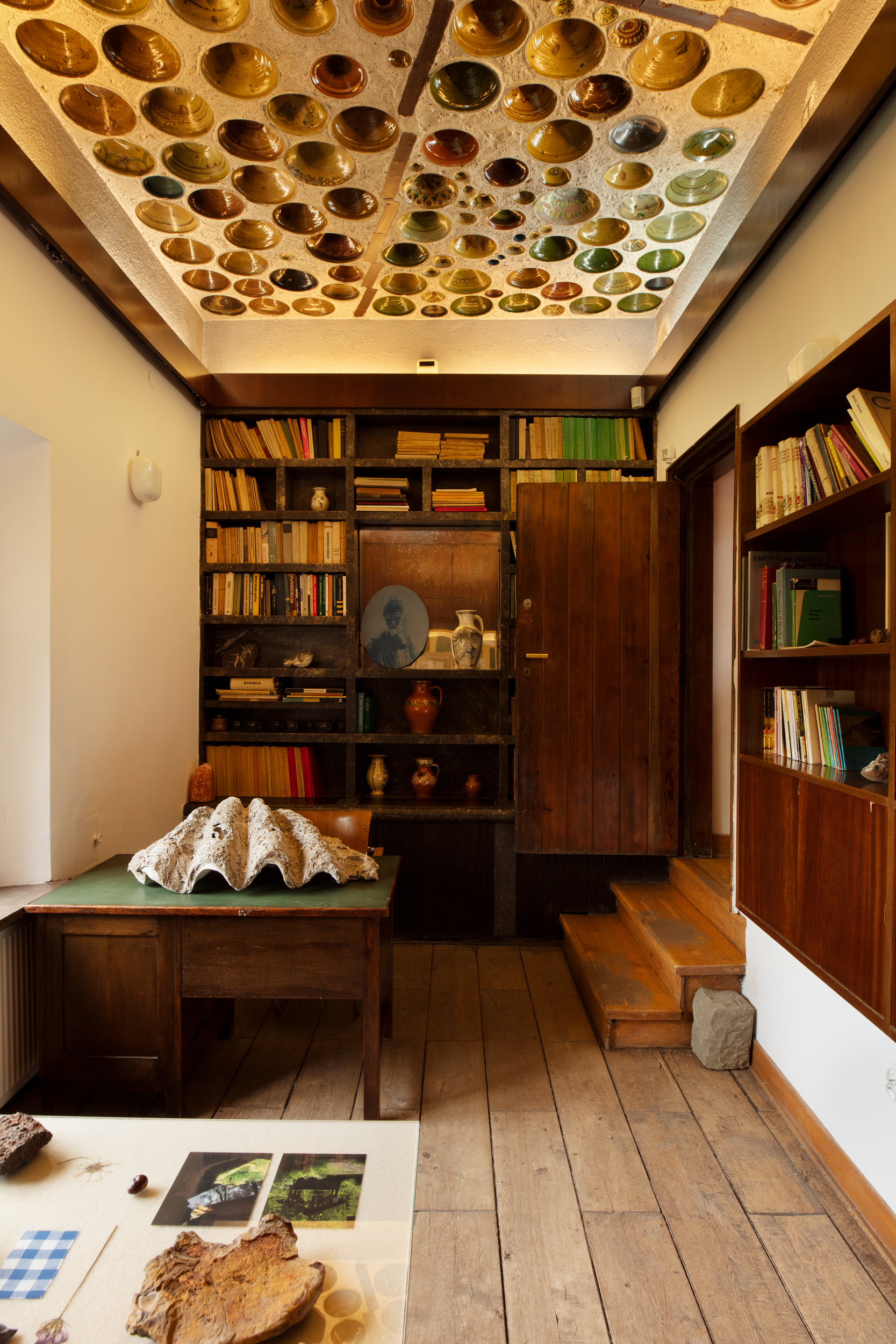
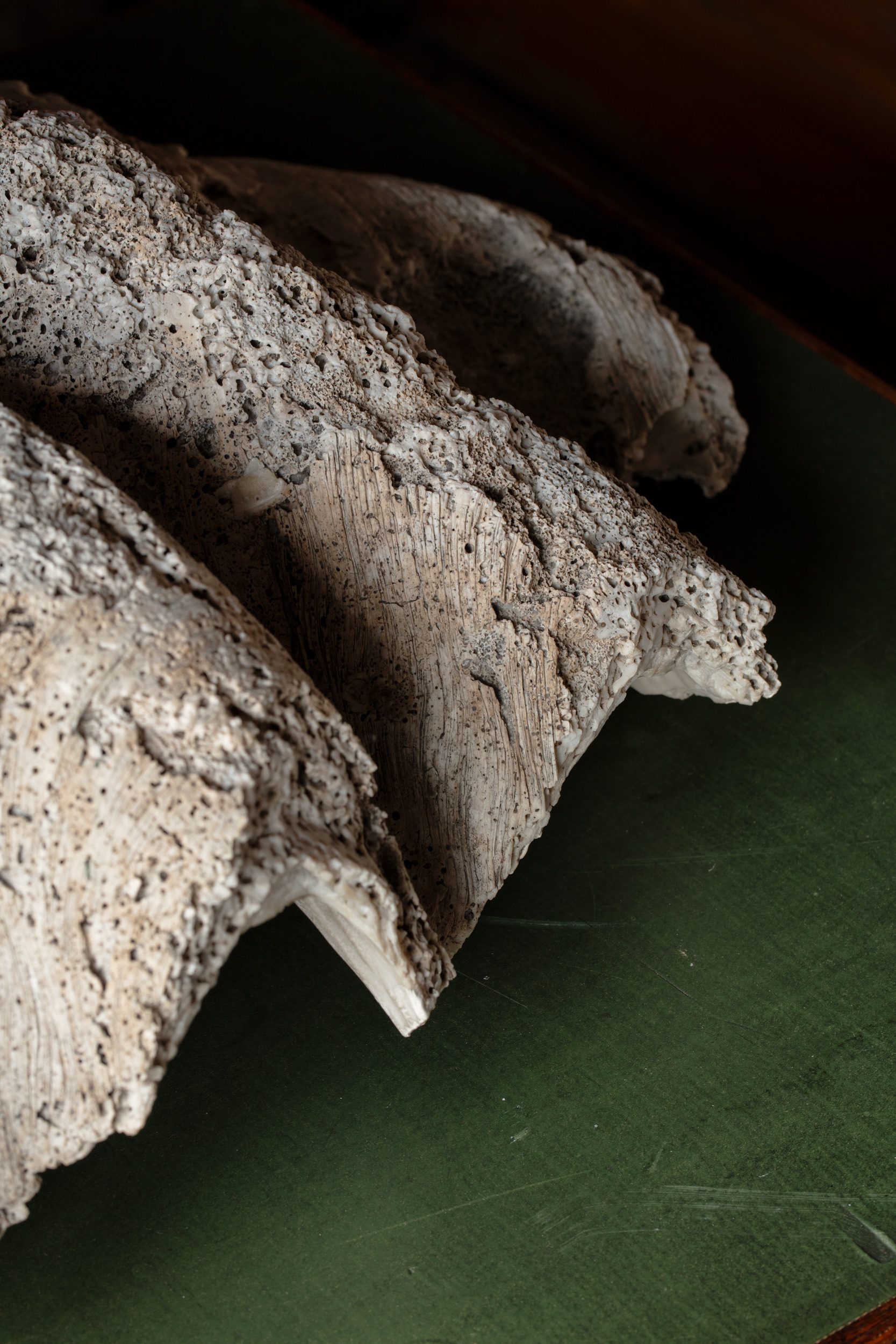

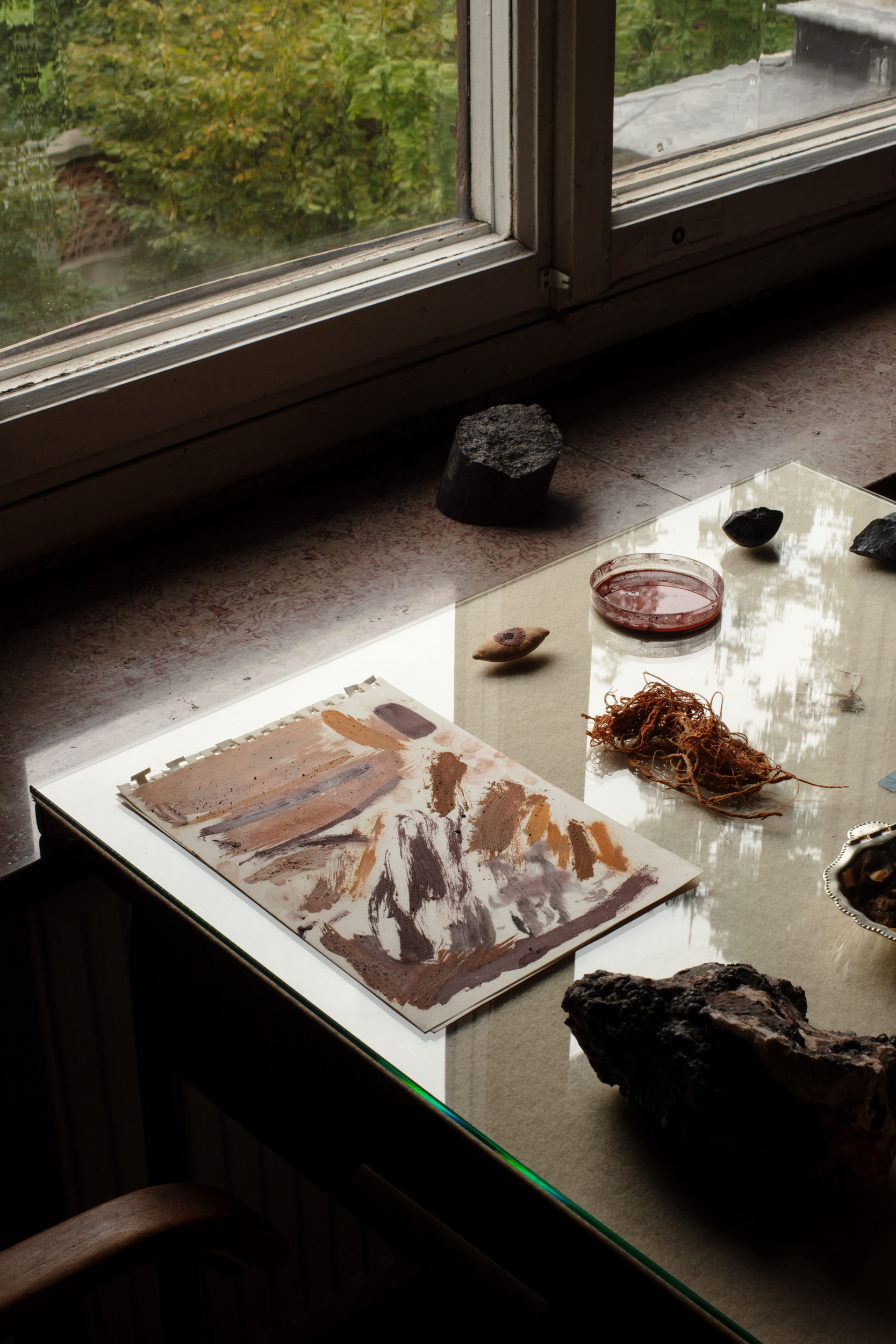

DRAMATIS PERSONAE
Artist
Johanna
Sylwester the Miller
Mother
Miller’s Wife
Children
The Branickis
Szymon Bogumił Zug
Tsarist Senator
Hanna Czeczott
Ectoplasm
The Pniewskis
Kaziu Poniatowski
Insurgent
Liquidator
Rooster
Iron bacteria (Leptospirillum ferriphilum)
Devil
Ammonite
INTERIORS
Hall
Living Room
Russet Hue Laboratory
Stairs
Lodge
Secret Room
SETTING
A stone villa on a hilltop, with a hidden entrance gate, like in a fortress. Spirits meet here: those summoned by the Artist and those inhabiting the building for a long time.
A small corridor, a tiny window in a stone alcove on the right. A picture hanging above the door shows a castle case. A small hall behind the door. The Living Room, the first room of the Otherworlds, visible on the left, through a half-open wooden gate.
Noises of the old Silesian village of Sandowitz come from there, as well as from its mill, powered by the Mała Panew river, all mingled with the sounds of the villa. A huge mill wheel, oddly rust-coloured and glittering, on the limestone-covered wall. Next to it the décor of an 18th-century cabinet, the spirit of the beginnings of the building. It is accompanied by a silver-plated rummer and a burl-framed cabinet suspended on bright rope. A woollen pallet on the floor, a sack without flour but with children’s dreams inside. A shining egg hidden in it. The creation is lying sprawled on the carpet, a place from which the Devil is best seen. He is hiding behind a red curtain, in front of which a boy is arching his back.
On the left a limestone stoup and tombstone with the names removed. A stone leaning against a stone. A green couch nearby with a Bakelite telephone – a medium through which matters are handled. A Gdańsk wardrobe beside the grand piano and the Miller’s Wife clad in a crochet dress. A screen made of crib bars between them.
Right next to them – another mystery room. You need to descend three steps to get to the Russet Hue Laboratory. A small space with an ornate ceiling containing various artefacts: Hutsul bowls, a photograph of a ferrous spring near Sandowitz, a mollusc shell, dried ectoplasm. A study of iron in its various forms among them. On the desk lumps of reddish minerals and colourful powders made from them – hematite, goethite, limonite, magnetite. A colour palette from black to yellow, including ochres, umbers and the colour of blood. They were used to make paints which cover fragments of the house walls. The rusty red colour permeates every layer of this reality, and all the characters summoned in the Otherworlds are connected by iron.
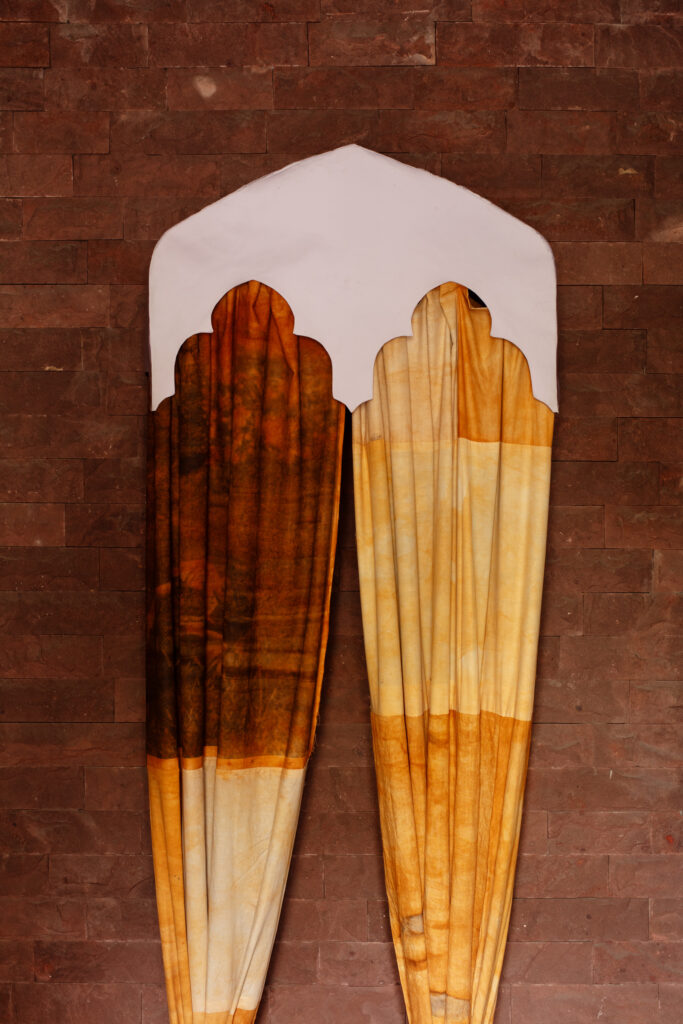
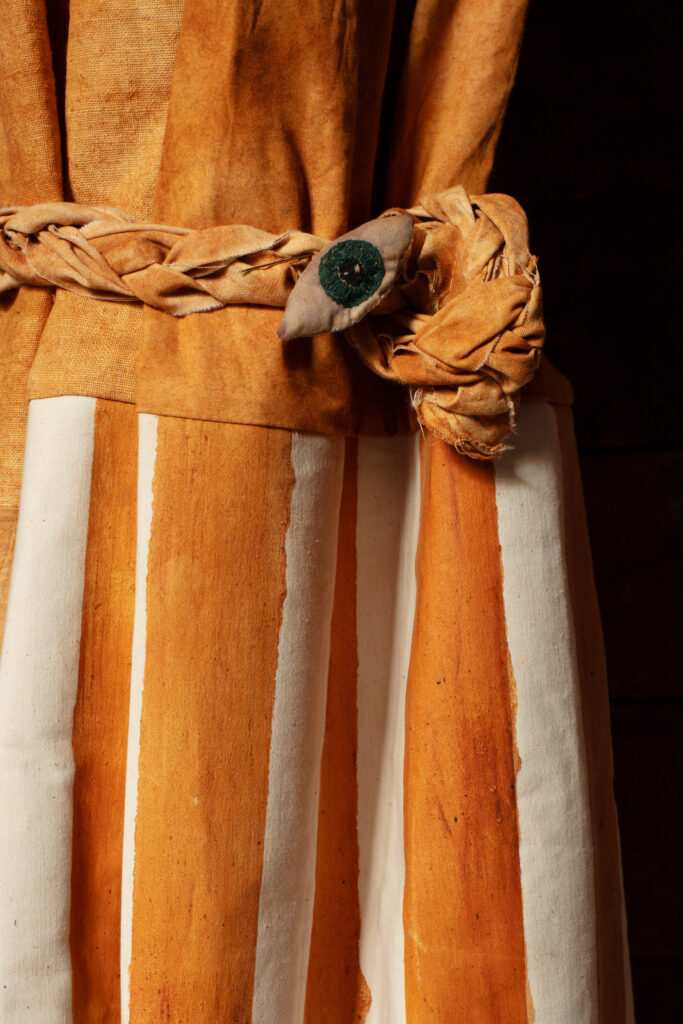
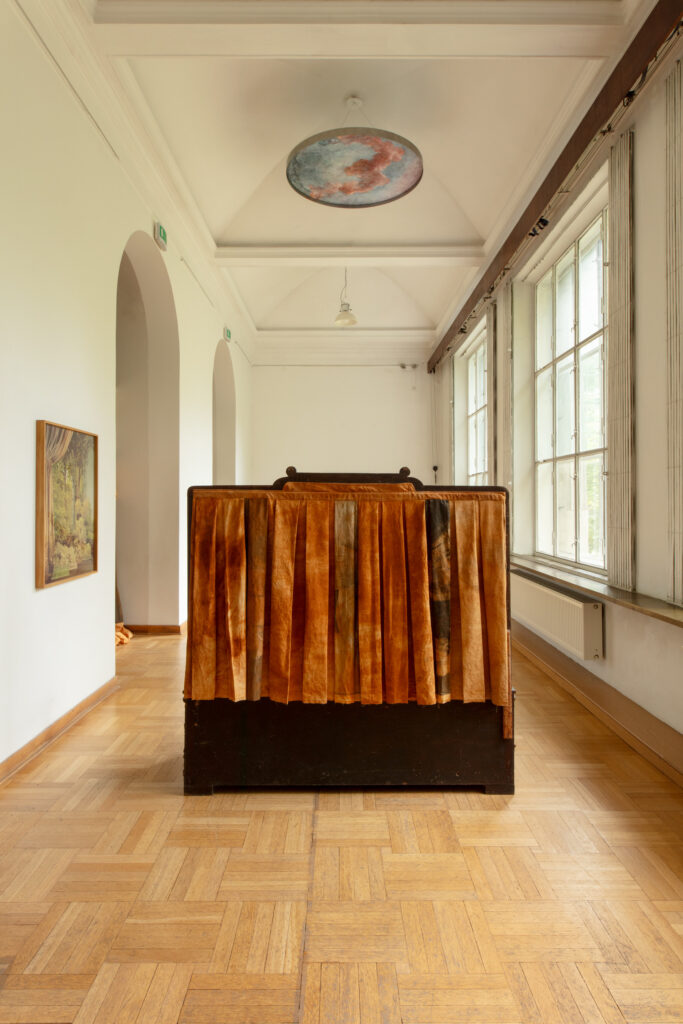
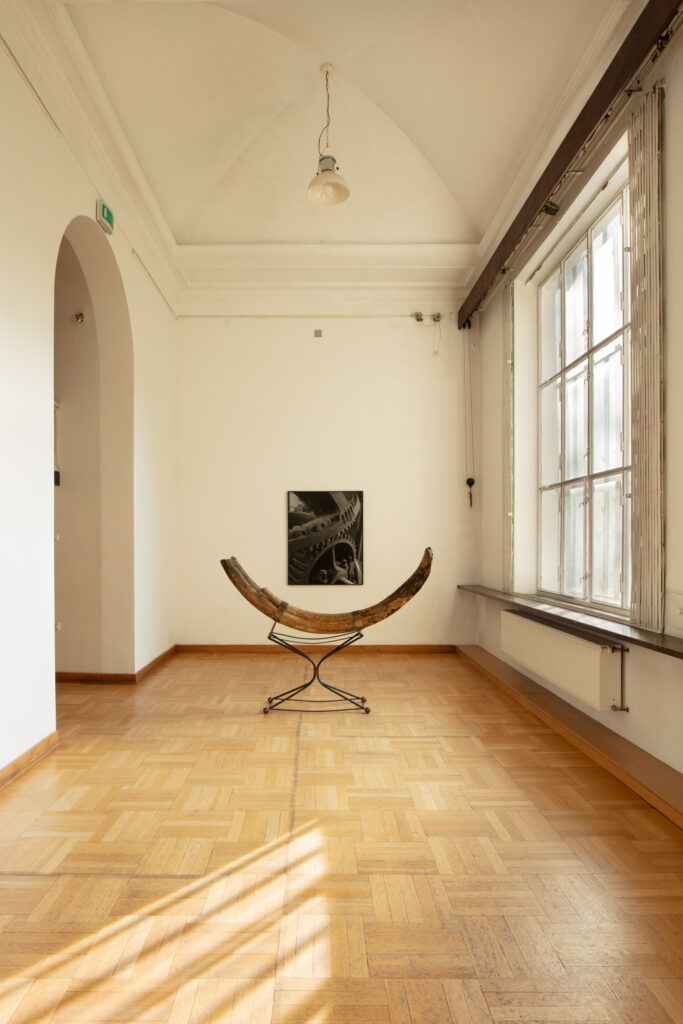

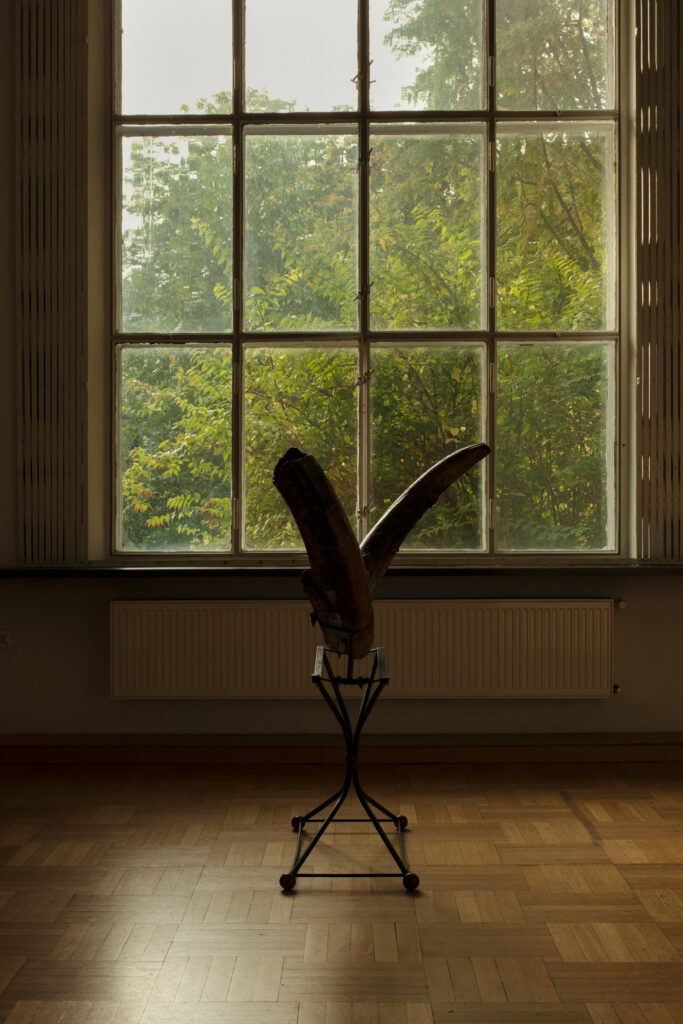
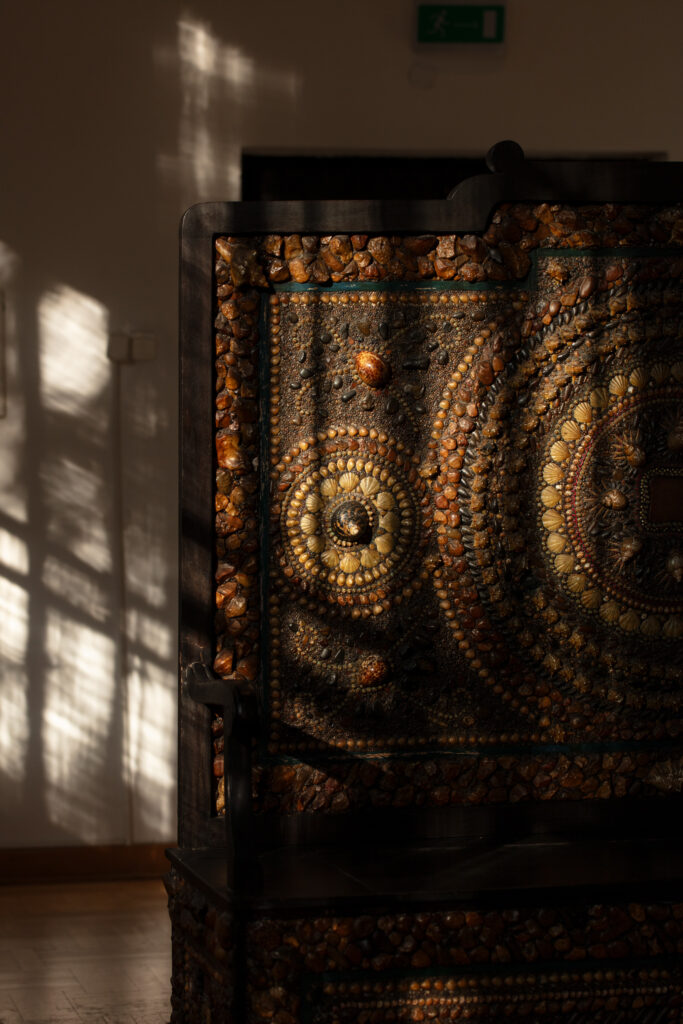
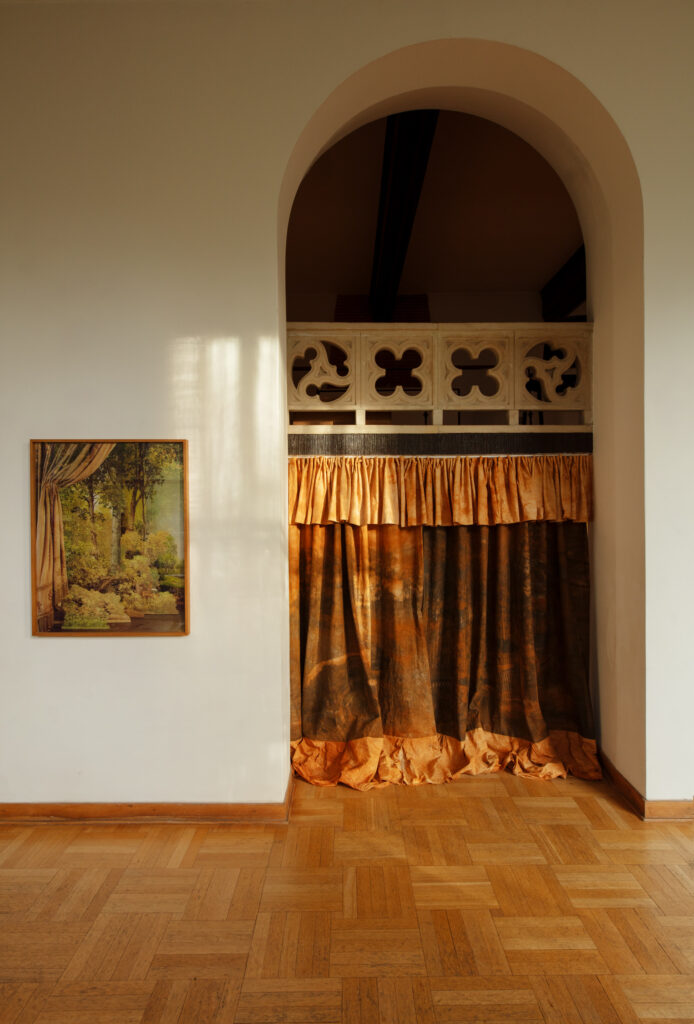
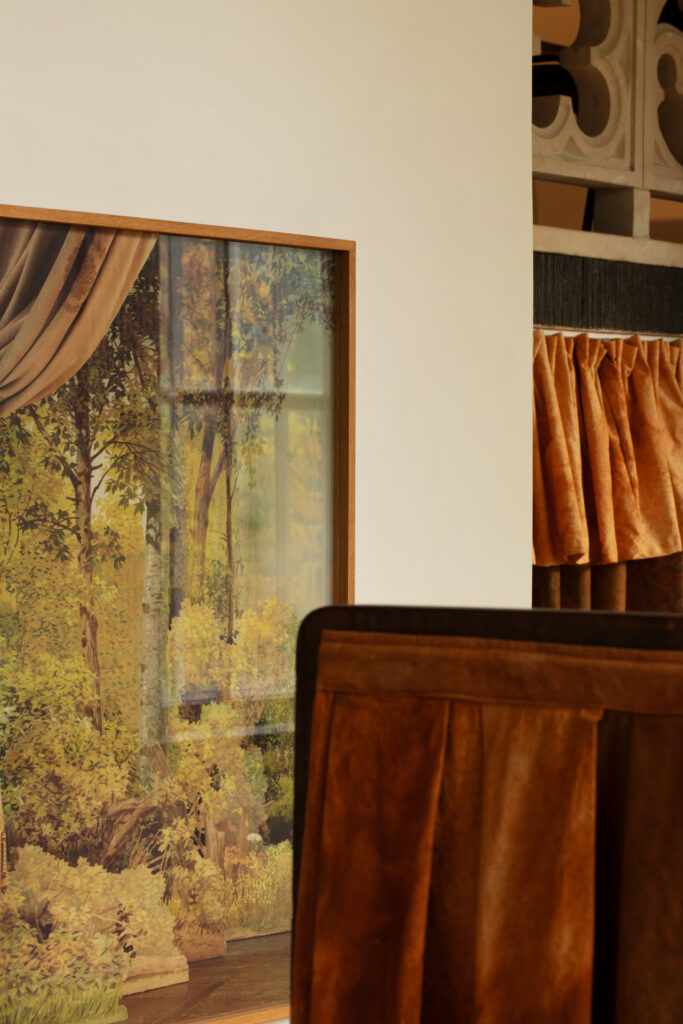
The library of the Museum of the Earth on alabaster shelves, a mirror, the apparition of a blue marquise on silk, looking at her dresser.
A stone fireplace near the exit from the Parlour, with the Ammonite inside. The children’s portrait hanging above it. Also: the mirror image and stone décor from St. Anne Mountain, adorned with a little pearl chain. And next to it, on two lumps of bog iron, the portrait of a boy in contrapposto. It is hovering above an old sand pit at the bend of the Mała Panew, where the magic of smelting was performed since time immemorial. Bog ores, rich in morsels of iron, develop and renew themselves when iron-bearing groundwater slowly seeps through the sediment surface. Down towards the low wetland.
The Lodge is underground. A stairwell leads to it, a marble plaque at the top of the stairs lists the former incarnations of the building. A russet portal on the red sandstone wall invites you to the next space of the Otherworlds. Its original purpose is a mystery. What was it for its creator, Bogumił Szymon Zug? His spirit is summoned by the plafond with Aurora from the Arcadian Temple of Diana, placed high up in the middle of a large room. A shell bench under the plafond, facing the cogwheels of a water turbine which set the milling machinery in motion. A semi-circular mammoth tusk among them. Trees encroach on the interior through high windows.
The passageway to the next room is hidden behind a russet curtain. Right next to it the photo of a private palace theatre with a hand-painted backdrop of a forest. A collection of treasures from the Museum of the Earth behind them, including the skeleton of a forest elephant, skull of an aurochs, fossils from coal forests. Time stopped in stone and bone. It is a space of the former studio of architect Pniewski, incorporated in the ruins of a masonic lodge. In the past, it showcased the dead menagerie owned by the Branicki family, preserved and brought from all over the world.
The stone villa on the hill has yet another room, located on the top floor. Stairs from the Parlour lead there. It is the former bedroom of Basia, Pniewski’s daughter. It is divided down the middle by a huge wardrobe – the catalogue of the Museum of the Earth collection. The smell of hay from the pallet hangs in the air behind it. There is a portrait of a boy with a rooster next to the bedding. The room is inhabited by the spirit of Hanna Czeczott, learned in paleobotany, an aficionado of herbaria. A book collection inside, botanical showpieces, notes and sketches, curiosities. Someone painted a coal forest landscape that nobody ever had a chance to see. A tapestry with an apple tree over the fireplace and scattered marigolds. A spiral stirrer under the pillar.
Everything in this house is mixed and impossible to forget. Will the Museum of the Earth be another phantom?

